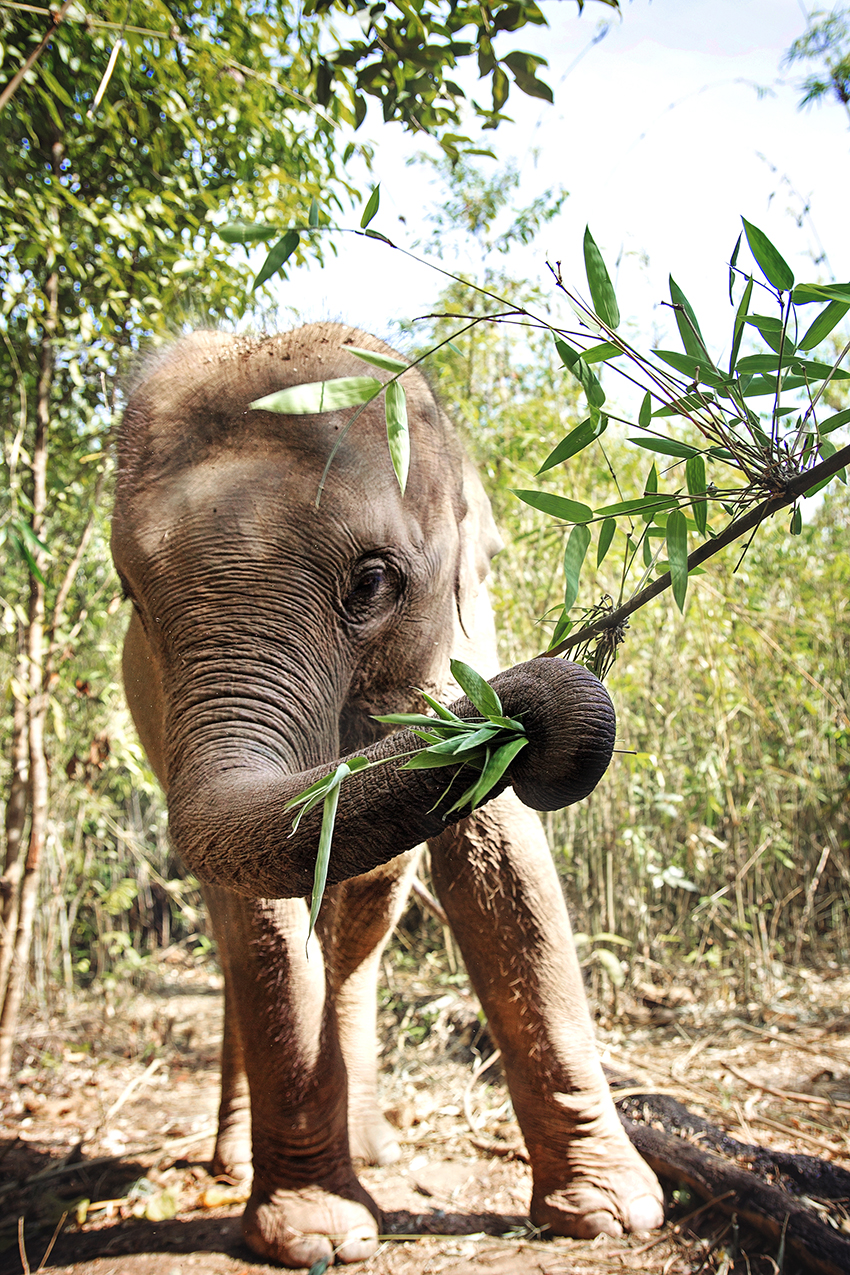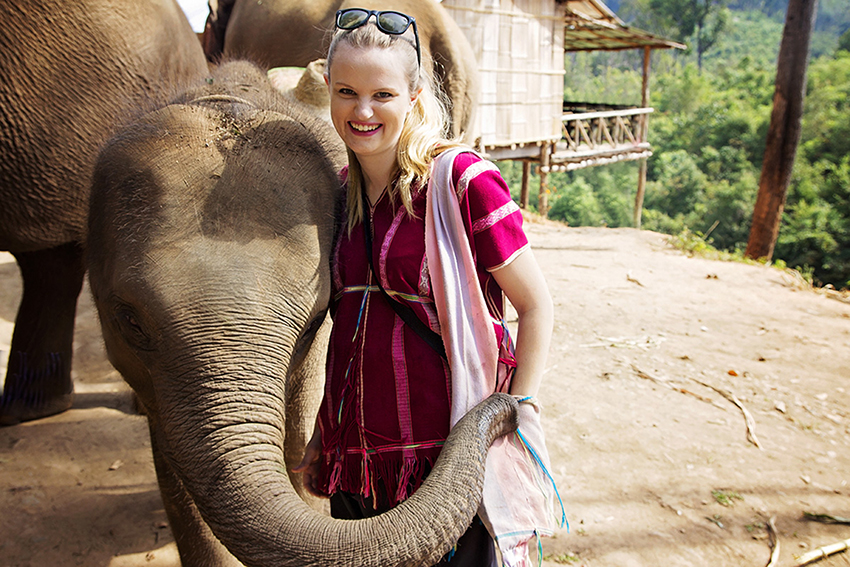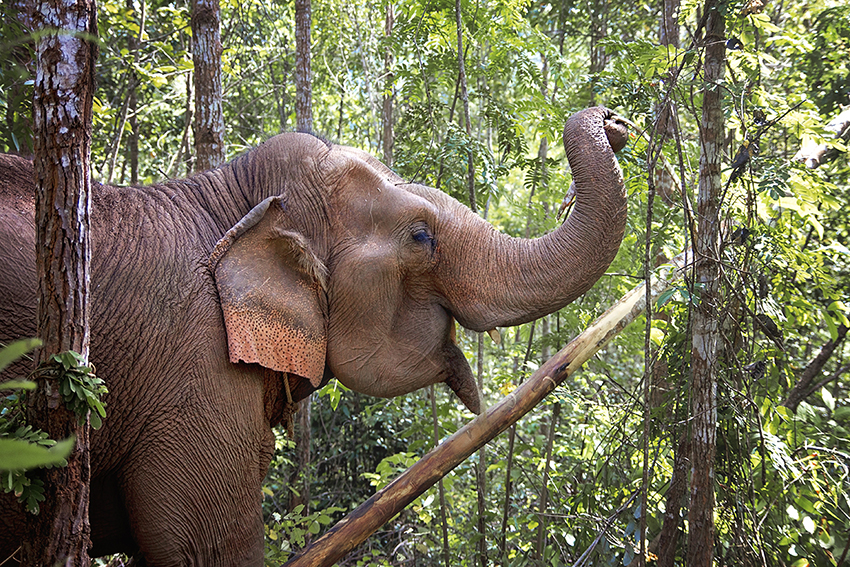The streets of Thailand are swarmed movement: the three-wheeled tuk-tuks, jam-packed songthaews, and zipping motorbikes cram among cars and buses, a mix that earned the country first place in the world’s most congested roads.
But of all the modes of transportation available in Thailand, the most somber is the elephant. Often adorned with colorful ornaments and fabrics with a haphazard seat tied to its back, the elephants trudge along the sides of roads in tourist cities. I couldn’t help but feel something was off the first time I saw them.
Riding elephants remains a ubiquitous part of travel in Southeast Asia: If you can’t ‘Gram a photo of you atop a massive elephant, did you even go? However, the practice is rooted in cruelty.

Babies are ripped from their mothers and subject to a process called phajaan, or in English, “the crush.” Deprived of food or sleep, the elephants are beaten and stabbed with hooks and sometimes even blinded until they learn to submit to the mahouts who train them. The cruelty rarely ends after training, and elephants comply with their mahout in fear of violent retribution. Not only that, but also, elephants aren’t built to support humans on their backs, causing a painful strain on their spines.
Staying away from elephant rides was an easy choice for me. But as I traveled around Thailand, I learned that the issue of elephants in Southeast Asia is much more complicated than simply abstaining from riding.
Asian Elephants are listed as endangered, and their numbers have decreased by 50% over the last three generations. It’s still in descent today. While reducing the demand for animal tourism in Thailand helps, it ignores one problem: there’s not enough empty land in Thailand, or other Southeast Asian countries, for a robust, wild population. Across Asia, elephants have lost 85% of their original habitat.
I deal with issues of land in developing countries constantly in my work with Tuli. In East Africa, colonizers created wildlife refuges that protect big game species today, but no such refuges were established in Southeast Asia and, as you can imagine in such a densely populated region, there’s simply no room.
A solution many developing countries implements is simply kicking people out. Currently, the Ugandan government is rehabbing former wetlands that currently house a dense residential area on the outskirts of Kampala. To do this, the government canceled the land titles for parcels on this plot, without paying title holders—but only in the slums, not in a nearby, wealthier area that also spans the wetlands. Land is survival, people in the slum tell me, and the rehab is forcing the country’s poorest to start from zero. My hope is that, if Thailand takes a similar approach, the poor are not left vulnerable.

In the meantime, however, Thailand sits with its elephant problem. Many opposed to elephant rides are opposed to domesticating elephants as well, and for good reason, considering the abhorrent process of the phajaan. but if released, where would the endangered species go?
While in Chiang Mai, I visited Elephant Nature Park, a nonprofit organization that buys elephants out of the tourism industry and rescues them from the illegal logging industry. It also teaches local mahouts nonviolent training techniques for their elephants, much like the way I used positive reinforcement to train my dog.
My time at the park was, in my opinion, more fun than any elephant ride could have been. We drove high into the mountains to a Karen village, where the park teaches local mahouts ethical training and rehabilitates its new rescues before integrating them into the herd at Elephant Nature Park’s sanctuary.
We walked newly rescued Kham Moon through the jungle, helping her accustom herself to freedom and watching her trample trees and use her trunk to bring bark and grass to her mouth. We then took her to a swimming hole, where we rubbed mud on her to keep her cool under the hot, Thai sun. Splashing around with her and sliding in the mud, I got to appreciate her size and mourn her past.
It’s important when traveling not to blindly trust any animal tourism attraction that slaps “sanctuary” into its title, because the word alone doesn’t make a place ethical. I did hours of research and interviewed its workers while there, and was impressed with what I found. It also seems, to me, like a good solution to the lack of natural habitat for an IUCN Red-listed animal.
But not everyone agrees. At the park, I spoke with a Finnish elephant rights activist who came to Thailand to scope out elephant sanctuaries, and she told me she thought all elephants should be released to the wild. Curious, I asked if she thought extinction was a better scenario than domestication.
“That would be better for them than a life of captivity,” she said.
Personally, I think that’s a bit extreme. However, there’s a vein of thought that agrees release is the most ethical option, and it deserves a place in this discussion.

Regardless, it’s important for us as travelers to know that when we visit another country, we must assess our actions. Had there been no demand for elephant experiences in the tourism industry, these elephants would not have been so mistreated. Now that the demand is waning, the mistreatment is, too.
A friend who lives in Chiang Mai told me that since my visit there’s been a sharp decrease in ads for rides, as well as fewer sad elephants doing tricks and posing for selfies on roadsides. In a few years, she hopes the rides will be gone for good.
This is great news, not just for elephants, but for travelers in general: It’s easy to feel discouraged at the enormity of problems in the world.

your two cents